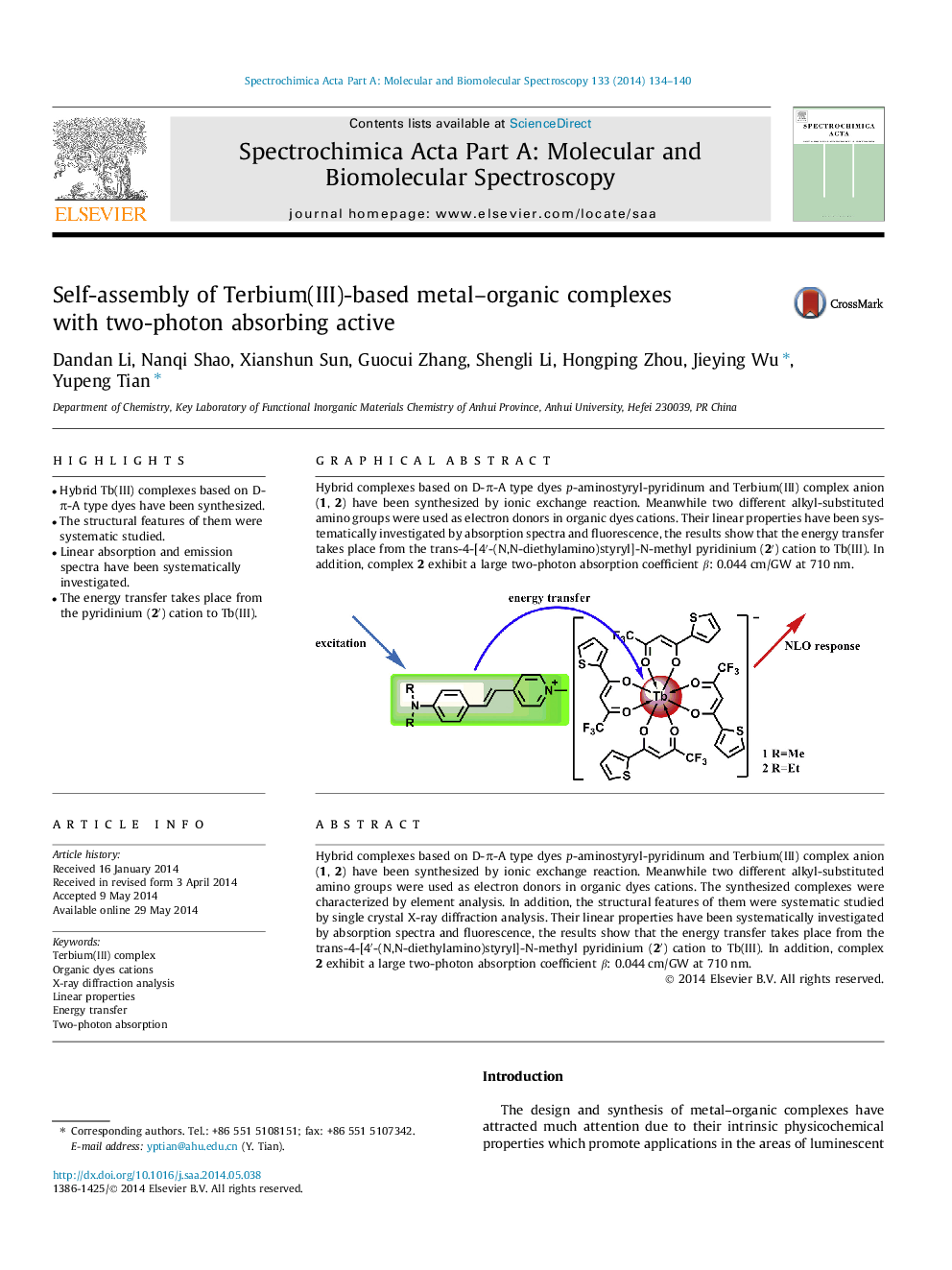| Article ID | Journal | Published Year | Pages | File Type |
|---|---|---|---|---|
| 1233434 | Spectrochimica Acta Part A: Molecular and Biomolecular Spectroscopy | 2014 | 7 Pages |
•Hybrid Tb(III) complexes based on D-π-A type dyes have been synthesized.•The structural features of them were systematic studied.•Linear absorption and emission spectra have been systematically investigated.•The energy transfer takes place from the pyridinium (2′) cation to Tb(III).
Hybrid complexes based on D-π-A type dyes p-aminostyryl-pyridinum and Terbium(III) complex anion (1, 2) have been synthesized by ionic exchange reaction. Meanwhile two different alkyl-substituted amino groups were used as electron donors in organic dyes cations. The synthesized complexes were characterized by element analysis. In addition, the structural features of them were systematic studied by single crystal X-ray diffraction analysis. Their linear properties have been systematically investigated by absorption spectra and fluorescence, the results show that the energy transfer takes place from the trans-4-[4′-(N,N-diethylamino)styryl]-N-methyl pyridinium (2′) cation to Tb(III). In addition, complex 2 exhibit a large two-photon absorption coefficient β: 0.044 cm/GW at 710 nm.
Graphical abstractHybrid complexes based on D-π-A type dyes p-aminostyryl-pyridinum and Terbium(III) complex anion (1, 2) have been synthesized by ionic exchange reaction. Meanwhile two different alkyl-substituted amino groups were used as electron donors in organic dyes cations. Their linear properties have been systematically investigated by absorption spectra and fluorescence, the results show that the energy transfer takes place from the trans-4-[4′-(N,N-diethylamino)styryl]-N-methyl pyridinium (2′) cation to Tb(III). In addition, complex 2 exhibit a large two-photon absorption coefficient β: 0.044 cm/GW at 710 nm.Figure optionsDownload full-size imageDownload as PowerPoint slide
